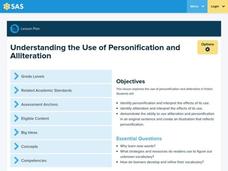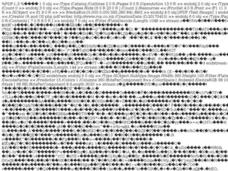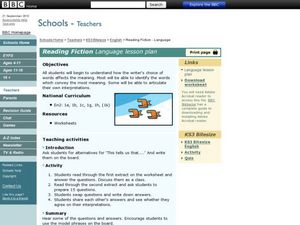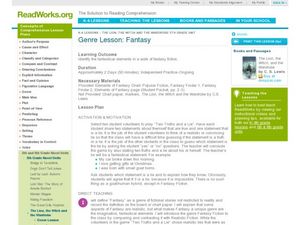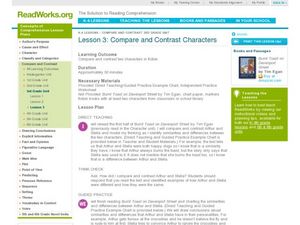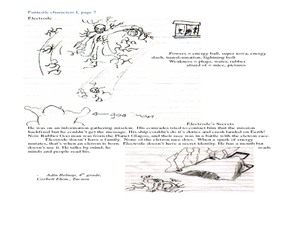Curated OER
Playing For Pizza Book Quiz
In this fiction books worksheet, students complete seven multiple choice questions about the book, "Playing For Pizza." These questions contain concepts such as choosing the correct author, who published the book, when it was on the New...
Curated OER
Plum Lovin' Book Quiz
In this fiction books learning exercise, students complete seven multiple choice questions about the book, "Plum Lovin'." These questions contain concepts such as choosing the correct author, who published the book, when it was on the...
Curated OER
Plum Lucky Book Quiz
In this fiction books activity, students complete seven multiple choice questions about the book, "Plum Lucky." These questions contain concepts such as choosing the correct author, who published the book, when it was on the New York...
Curated OER
Portnoy's Complaint Book Quiz
In this fiction books worksheet, students complete seven multiple choice questions about the book, "Portnoy's Complaint." These questions contain concepts such as choosing the correct author, who published the book, when it was on the...
Curated OER
Rage of Angels Book Quiz
In this fiction books worksheet, students complete seven multiple choice questions about the book, "Rage of Angels." These questions contain concepts such as choosing the correct author, who published the book, when it was on the New...
Curated OER
Ragtime Book Quiz
In this fiction books worksheet, students complete seven multiple choice questions about the book, "Ragtime." These questions contain concepts such as choosing the correct author, who published the book, when it was on the New York Times...
Curated OER
Review of Personification and Alliteration
Learners review personification and alliteration. In this literary devices lesson, students use personification and alliteration in a sentence. Learners draw a picture reflecting personification.
Curated OER
Compare and Contrast Two Books
Help your middle school readers recognize the elements of fiction in two books. After reading and taking notes on the details of the books, they write an essay comparing and contrasting the two books. Use this lesson to emphasize...
Curated OER
Pebbles, Sand and Silt -- Categorizing Fiction and Informational Books
Primary readers complete the activities in a Pebbles, Sand and Silt FOSS kit. As a class, they are given a group of rocks and they are to categorize them based on their activities in the FOSS kit. They use this information and apply it...
Curated OER
Reading Fiction
Explore how a writer's choice of words can convey meaning to the reader. Learners read selections and write questions about the content. Each question is answered by two groups of students and the differences in interpretations are...
Curated OER
Welcome To Your Library
As an overview of the positive things the library has to offer, this would be a helpful presentation. However, it does not provide much information. This presentation could be augmented by adding details about the Dewey Decimal system or...
Curated OER
Genre Lesson: Fantasy
Young scholars study the elements of fantasy in fiction as a whole group by dissecting fiction stories. In this story elements instructional activity, students work through a handout about fantasy to point out the elements that point...
Curated OER
Compare and Contrast Characters
Third graders compare and contrast. In this compare and contrast instructional activity students find similarities and differences between two characters from a fiction book. Students use a graphic organizer.
Curated OER
Comparing and Contrasting Fiction and Nonfiction
Second graders analyze differences between fiction and nonfiction texts. In this compare and contrast lesson, 2nd graders review texts, discuss similarities and differences, and complete a Venn Diagram.
Curated OER
Distinguishing Fiction and Non Fiction
Have your class go on picture walks of different books, and identify them as either fiction or non fiction and why. Working in groups, kindergartners state whether the book tells information or comes from the author's imagination. Use...
Curated OER
Causes
Things usually don't happen without a reason; usually any event has a cause that got the ball rolling. The book, If You Give a Mouse a Muffin is used to help learners understand the concept of causes in literature. Examples from the...
Curated OER
Lesson 3: Cause and Effect Relationships
The Gunniwolf is a book full of events that get kids asking why and what. They note several events on a chart, and then discuss how they think the instructor is able to determine the causes and effects they find. They continue reading...
Curated OER
Identifying Setting and Completing a Story Map
Second graders complete a story map for Frog and Toad Are Friends. In this making inferences lesson students find specific details from the book to complete their story map. They map one chapter at a time.
Curated OER
fantastic Characters
Students study stories. In this writing lesson plan, students discuss the three aspects of a story, read stories focusing on the characters, write a story as a class about a character made up by the class, and write a story with an...
Curated OER
Big Bushy Mustache: comprehension skills
In this comprehension skills worksheet, students read the book Big Bushy Mustache and complete comprehension activities. Students complete 5 activities including note taking, making inferences, fiction and non fiction, drawing...
Curated OER
Satire in Fiction
Twelfth graders identify satire in various fictional texts. For this language arts lesson, 12th graders will learn to define satire, parody, and caricature. Students will identify different forms of satire in historical and modern-day...
Curated OER
The Power of Fiction
Students explore fiction that moves individuals to social action. In this literature lesson, students read The Jungle by Upton Sinclair and analyze its literary worth as well as its investigative journalism. Students investigate other...
Curated OER
Silly Bear Story
In this reading comprehension worksheet, students will read and evaluate a passage about bears and answer five true or false questions and determine whether the passage is fact or fiction. Students will then evaluate the passage and...
Scholastic
Mixed Bags: Fiction and Nonfiction
Using a bag with one fiction and non-fiction book of similar topics, partners work together to find the differences and similarities of each story. They record their obervances in a T-chart.








